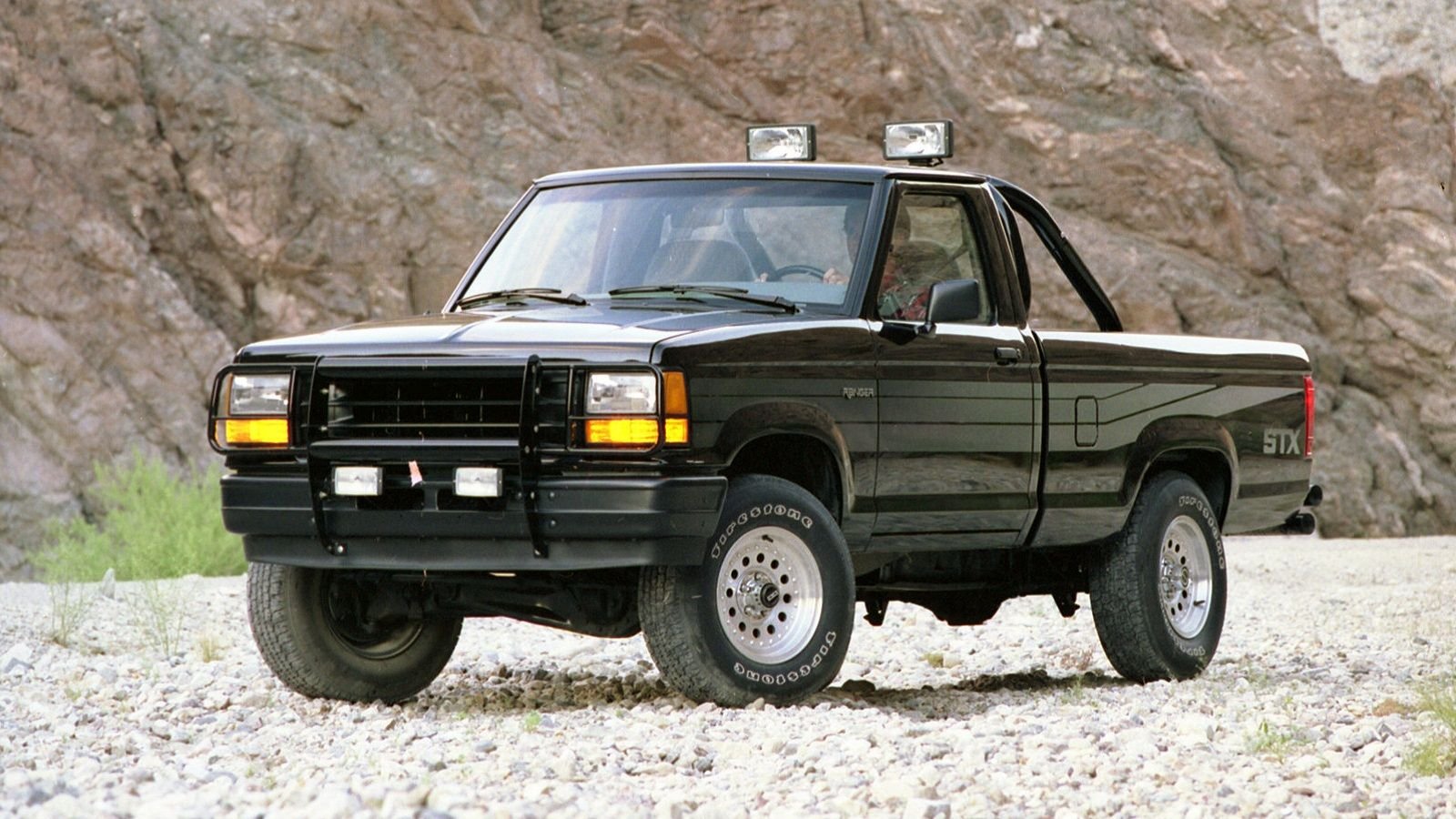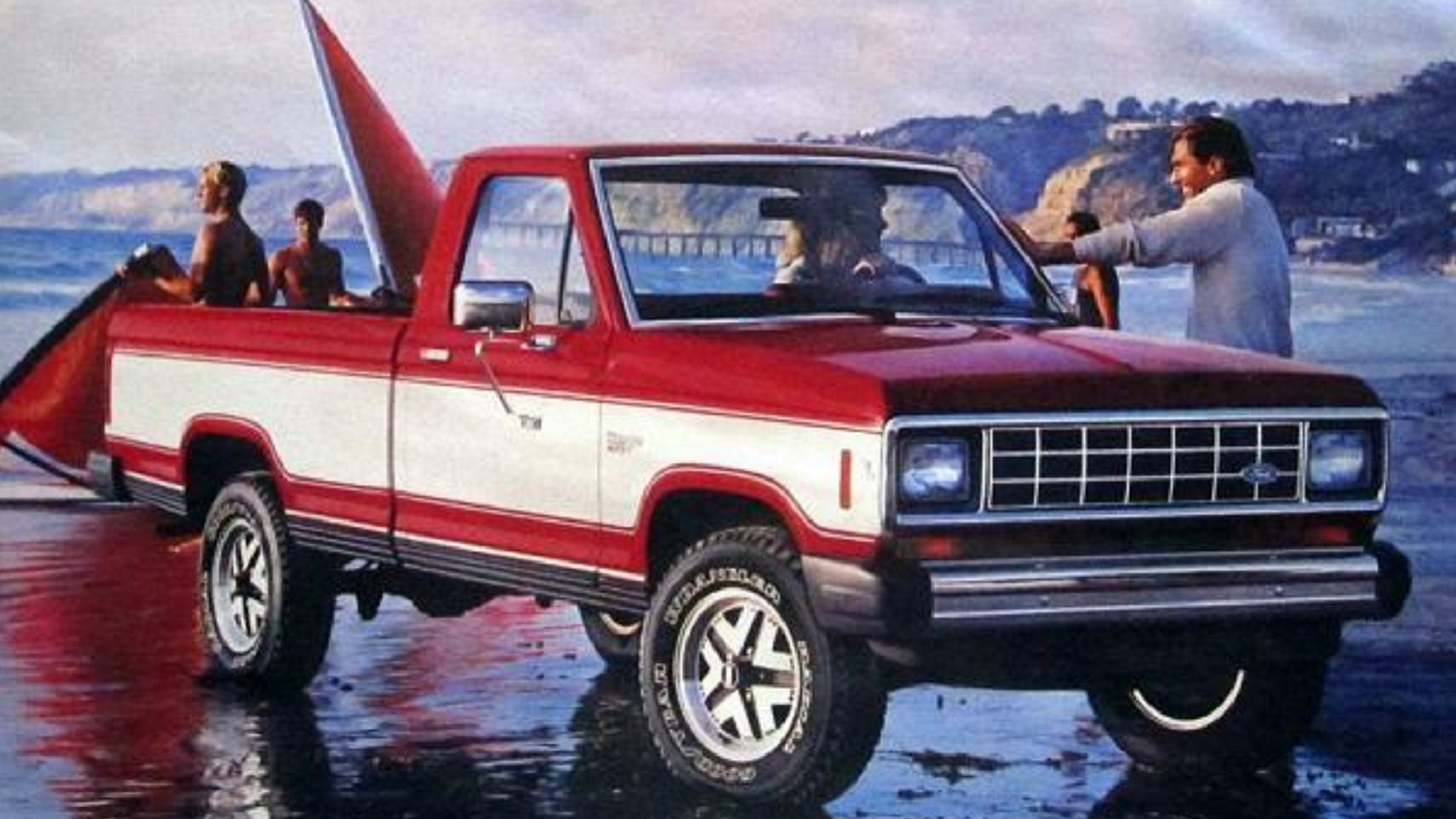Daily Slideshow: How the Ford Ranger Became an American Icon
What started out as a trim package for the F-Series soon became one of America's favorite trucks.














Birth of a Legend
When the gas crunch hit in the '70s, Ford knew that it needed something smaller than the F-Series to combat the oil crisis as Americans began to turn away from bigger, not so fuel-efficient vehicles. So by 1976, development on the Ranger began, and by 1982 (for the 1983 model year), the soon-to-be-legendary little pickup was hitting dealerships. Little did they know at that time that the Ranger would become, for a while, the best-selling truck in the U.S.
>>Join the conversation about the impact the Ranger has had right here in the forum.
American Solution
Following World War II, America's economy wasn't in the best of shape. The Nixon administration, faced with rising inflation, abandoned the gold standard in an effort to curb it. But that did little to help matters, and the declining value of the dollar began to negatively affect oil prices. Throw in oil embargoes implemented as a result of the Israel/Egypt and Syrian war, and the price of oil had nearly tripled by 1974. At this time, Ford was already selling the Courier, but that was just a rebadged Mazda. It was time for a truly American, reliable, fuel-efficient, compact pickup.
>>Join the conversation about the impact the Ranger has had right here in the forum.
Engineered to Be the Best
It didn't take long for Ford to determine that the survival of the truck hinged on fuel economy. So a smaller, four-cylinder-powered pickup made all the sense in the world, and it wouldn't threaten the still-strong selling F-Series. Ford poured a lot of resources and advanced (for the time) technology into developing the Ranger, including computer-based analysis to help design parts that were both durable and lightweight. All of which Ford used to hit their ultimate end goal - the magical number of 20 miles per gallon.
>>Join the conversation about the impact the Ranger has had right here in the forum.
Exceeding Expectations
Suffice to say, Ford not only met but far exceeded their original goal. By the time the Ranger debuted, a 2.3-liter four-cylinder-equipped model carried an estimated fuel economy rating of an impressive 30 miles per gallon on the highway. On top of that, it could still handle a useful 1,610-pound payload. Originally, Ford anticipated that the compact truck would command 50% of the overall truck market by the mid-'80s, but it only reached 25% by 1985. Still, with few changes over the years, the Ranger was America's best-selling compact pickup by 1990.
>>Join the conversation about the impact the Ranger has had right here in the forum.
Growing Up
It was a decade later, 1993, by the time the Ranger received its first full redo. The 2nd gen Ranger was much more modern in appearance, with curvy lines and a host of technology upgrades. As the economy began to strengthen, the Ranger became available with more and more upmarket and industry-first options, including the first 5-speed automatic transmission used by an American automaker. After many years and millions of trucks sold, the Ranger had finally grown up.
>>Join the conversation about the impact the Ranger has had right here in the forum.
Changing Tides
But just as Ford dragged its feet upgrading the original Ranger, it also left the 2nd gen model to toil for far too long. From 1998 to 2011, few things changed outside of newly mandated safety features and the introduction of several special edition models and styling packages. And as gas prices plummeted, more and more buyers walked away from the once beloved compact pickup and got back behind the wheel of the F-Series.
>>Join the conversation about the impact the Ranger has had right here in the forum.
Resurrection
With sales waning, Ford made the difficult decision to kill off the beloved Ranger. Even the recession in 2008 and resulting spike in gas prices proved incapable of saving it. Customers were simply flocking to bigger, more luxurious trucks in throes. And despite the cries of enthusiasts who loved the Ranger, no one wanted a simple, practical little pickup anymore. But the Ranger was still a resounding success, with sales topping 7 million units over nearly 30 years in production. And now, it's coming back, maybe a few years late, as a mid-size offering. This time, we hope it sticks around for at least another 30 years!
>>Join the conversation about the impact the Ranger has had right here in the forum.
For help with your maintenance and repair projects, please visit our how-to section of Ford-trucks.com.
